Crassula or money tree: how to care for it to bloom
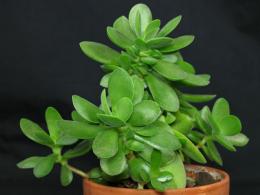
Crassula is familiar to all lovers of indoor floriculture without exception. This unpretentious tree can be found in almost every home. Crassula owes its popularity to the folk superstition that there will always be money in the house where this plant blooms.
Content
- Description of the Crassula
- Growing conditions and care
- Reproduction of the Crassula
- Possible growing problems and pests
Description of the Crassula
Crassula or Crassula - a succulent plant from the Crassulaceae family. It grows naturally in Africa and Madagascar. The following species can be grown indoors:
- Tree-like
- Cooper
- Spatulate
- Carpet
But of all these species, the tree crassula is the most widespread. This is what will be discussed below. Crassula arborescens is a typical representative of succulent plants. It has a thick large trunk, which becomes woody from below with age. The leaves are round, dense, glossy in appearance and somewhat reminiscent of coins. This is why the plant actually received the name money tree.
With good care, a Crassula plant in indoor conditions can grow to a height of over 1.5 meters. Flowering does not occur soon, after about 8-10 years from planting. Flowers, depending on the variety, can be pure white or slightly pinkish. Interesting! Due to its spectacular appearance, Crassula is very often used to create bonsai.
Growing conditions and care
Crassula Although the plant is unpretentious, for successful development, and especially flowering, it will need to create appropriate conditions.
Lighting
Crassula is a light-loving plant, so windows with a southern orientation are suitable for growing it. She feels as comfortable as possible on them. But during the summer heat, especially during the midday hours, she still needs to provide light shading.
If possible, the pot with the plant can be taken out into the garden for the summer. It is best to choose a place to place the Crassula in the garden with light partial shade and protected from strong winds.
Soil and watering
Crassula does not have any special requirements for the composition of the soil mixture. A mixture of turf and leaf soils with the addition of river sand is suitable for it. The main thing when growing it is to arrange good drainage. The root system of this plant is superficial. Therefore, wide and shallow flowerpots are best for growing Crassula.
When watering the fat plant, moderation should be observed. In winter, it should be reduced to a minimum. In summer the soil in a pot with Crassula should always be in a slightly damp state, but under no circumstances should moisture stagnate.
Feeding and temperature
In summer, during the period of intensive growth, the fat woman needs to be fed. To do this, you can use any complex mineral fertilizer for indoor plants. Fertilizing is applied once every two weeks. The plant is not fed from October to February. At this time it is at rest.
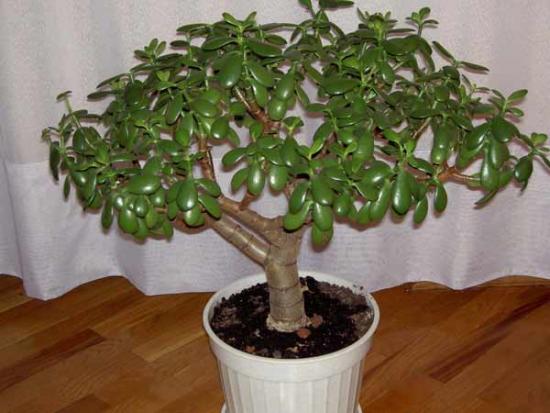
Crassula does not have any special requirements for temperature. She easily puts up with the summer heat.But in the autumn-winter period it needs to be reduced somewhat, it is best if it is 10-15°. This reduction will avoid unnecessary stretching of shoots.
Reproduction of the Crassula
You can propagate a money tree using cuttings. After cutting, they are dried for 3 days and then planted in sand or peat. Rooting usually occurs easily and quickly. After a month, the cuttings, as a rule, begin to grow. Caring for a young plant is similar to caring for an adult specimen.
Crassula can even be propagated using leaves. They are broken off and placed on a damp substrate under a film. For their rooting 2 weeks is enough. It will not be possible to propagate the crassula with seeds, since it does not set them in room conditions.
Possible growing problems and pests
Crassula is an unpretentious plant, but it will react to non-compliance with growing conditions. The most common problems when growing Crassula are the following: Leaves change color or fall off. Most often this indicates fungal diseases of the plant. The main reason for their appearance is watering with cold water or flooding.
The leaves have become limp. Most often, this is a symptom of root rot beginning to develop. It is necessary to immediately inspect the root system of the plant and treat the affected areas. If the roots cannot be saved, you can try to re-root the plant or take cuttings from it for further propagation.
Long and thin shoots. This phenomenon is observed in the Crassula as a result of warm wintering in insufficient light. Instead of resting, the plant continues to grow and stretch out.
Pests
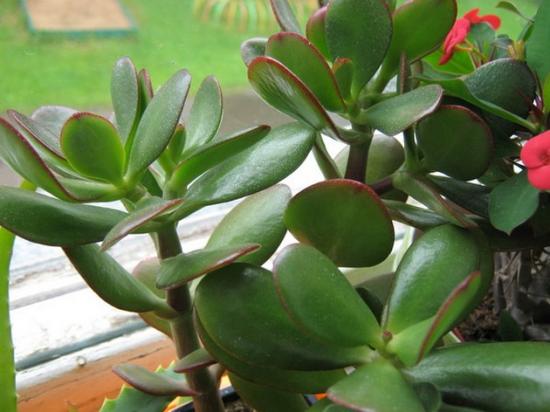
Pests very rarely attack Crassula, but sometimes it still happens. Most often you can find the following types of insects:
- Aphid
- Spider mite
- Whitefly
- Mealybug
Aphids are small pests that feed on plant sap. It is very easy to destroy it. In most cases, it is enough to wash the plant once with a solution of laundry soap. Spider mites are a fairly persistent and dangerous pest. It must be combated with the help of special insecticidal and acaricidal agents. For example, you can use Actellik or Fitoverm.
The whitefly is a very small pest. Its presence is indicated by whitish spots on the leaves. To destroy whiteflies, you need to use insecticidal preparations of the systemic group. They have a long-lasting protective effect and accumulate in all parts of the plant.
Mealybugs are another common pest of indoor plants. Its distinctive feature is a white discharge that resembles cotton wool in appearance.
Severely damages young shoots and leaves, thereby stopping the growth of the plant. Destroyed using contact insecticides. It is not difficult to grow a money tree at home and bring it to flowering. The most important thing is to create conditions as close as possible to natural ones, and then the plant will definitely thank you with its flowering.
Video about all aspects of caring for a money tree:


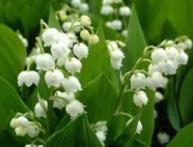
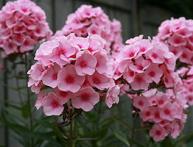

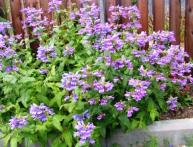
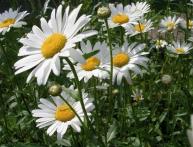
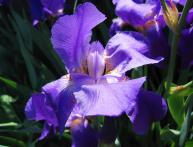
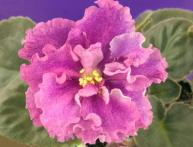
Comments
It seems that I comply with all the conditions of care - and my crassula grows on the south side, and I feed it, the watering conditions also seem to be normal. But for many years that the money tree has been growing, it has never bloomed, and I could not understand the reason.The first time I came across information that the plant blooms only 8-10 years after planting, but it’s not time for my Crassula plant yet, which means I’ll wait a year or two :):):)